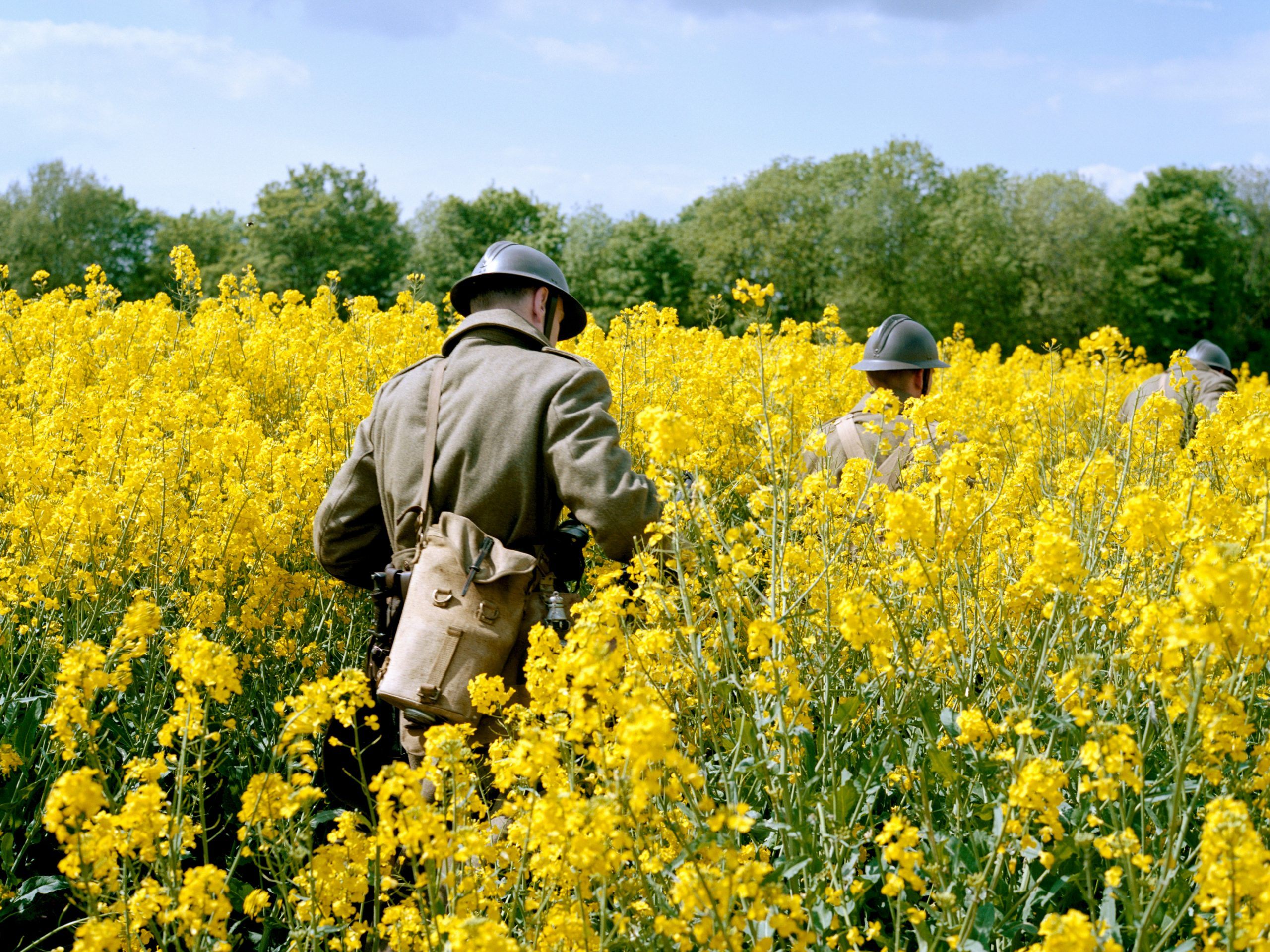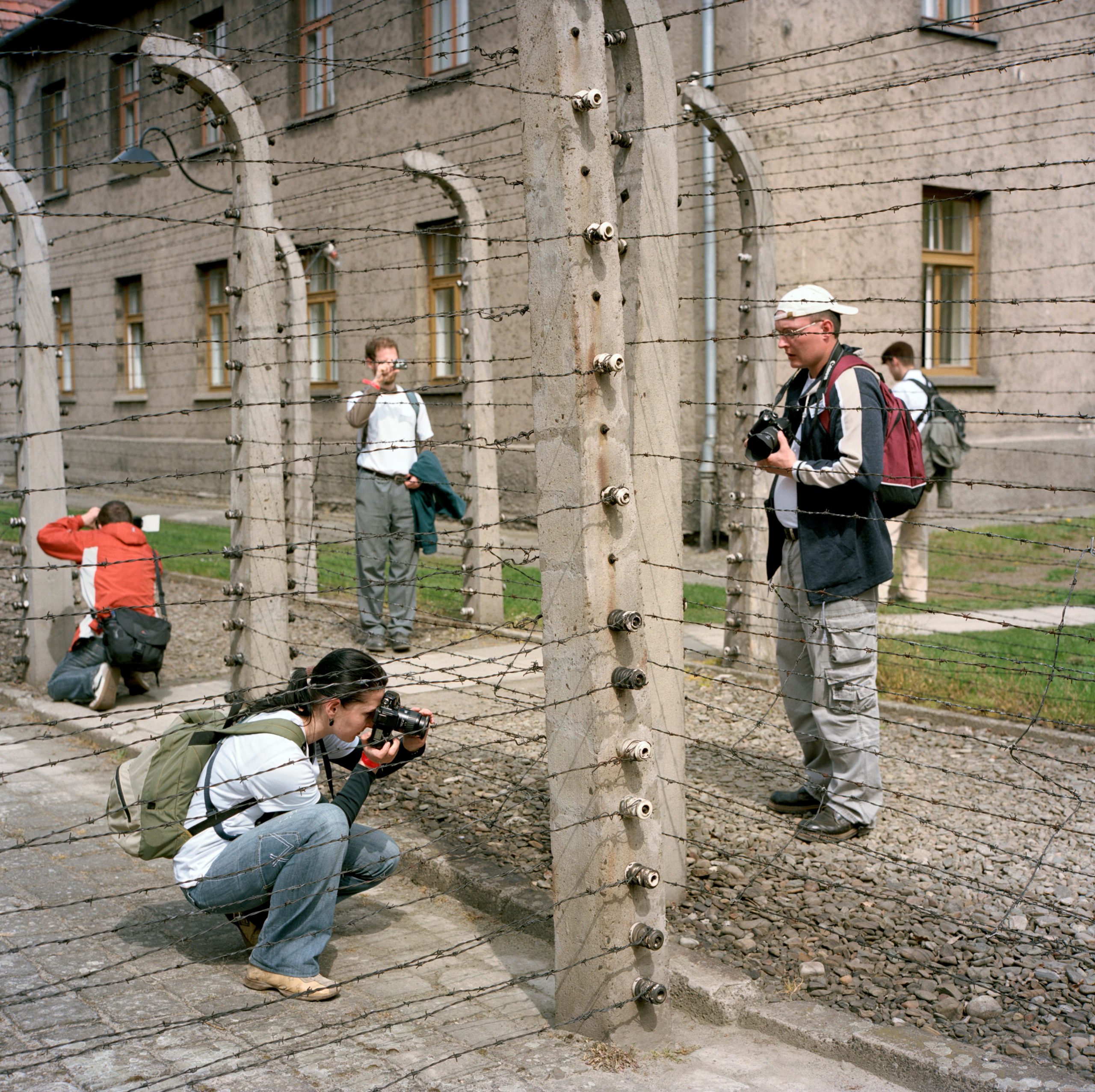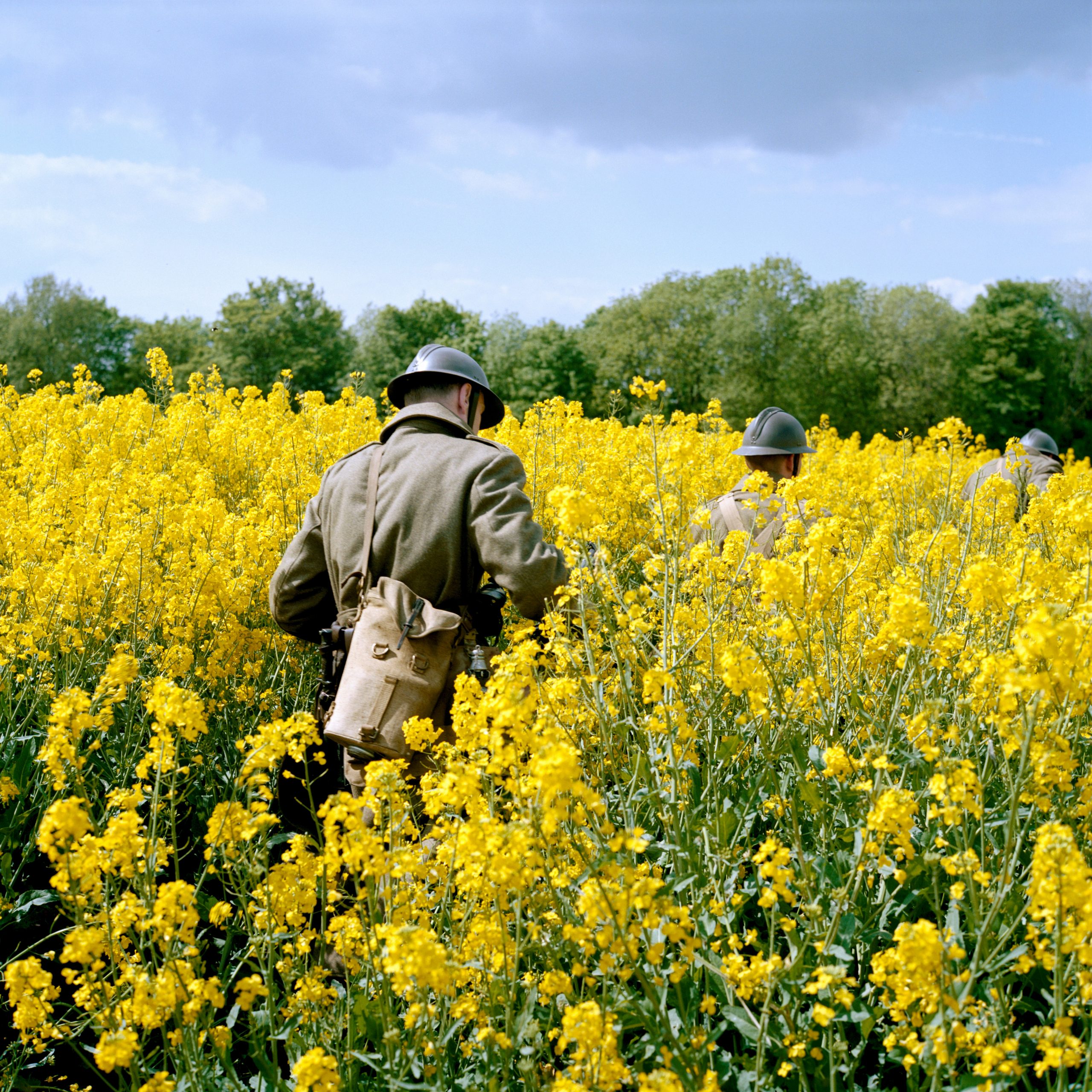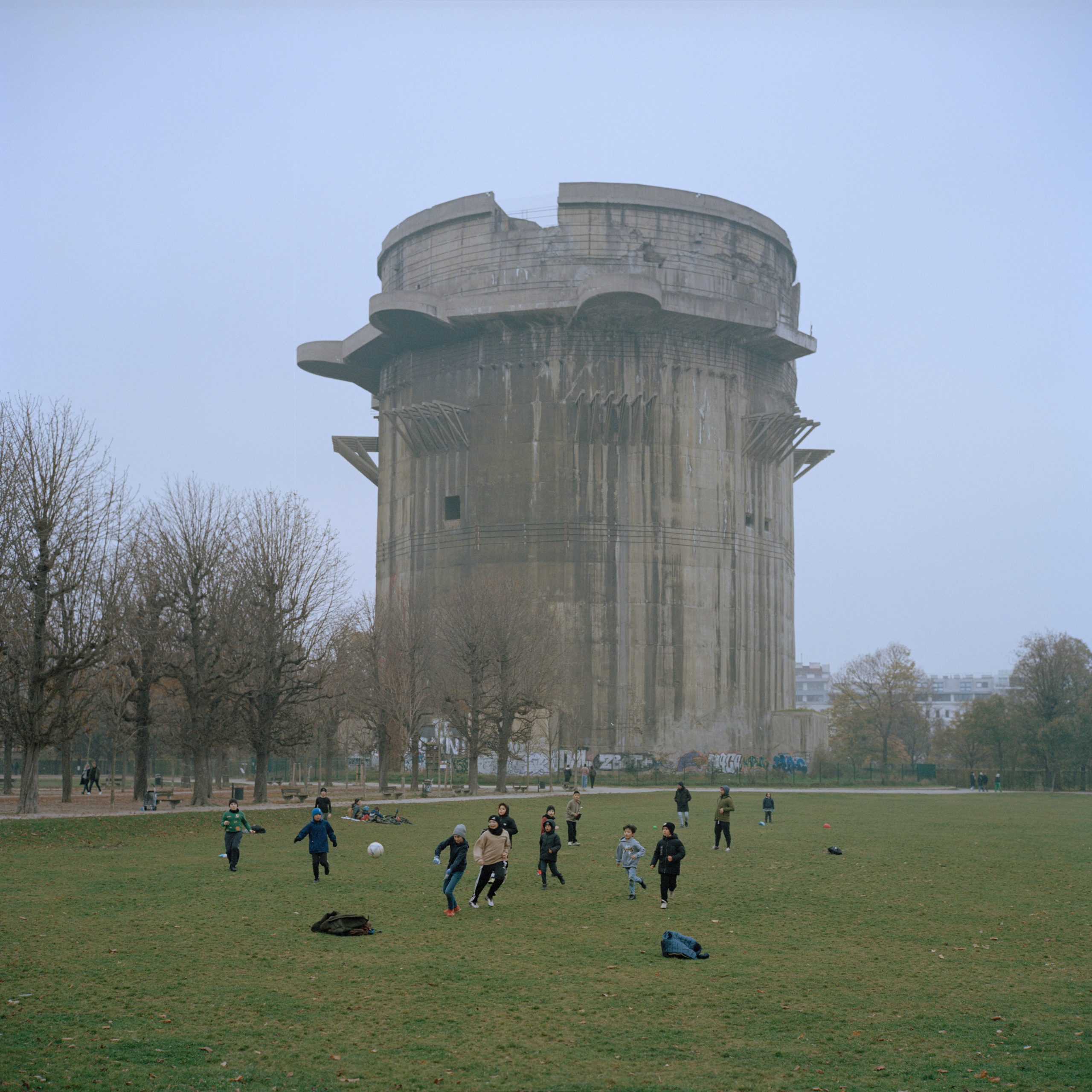"Tell me, where have all the flowers gone..." Memories in Pictures at the Jewish Museum Vienna

A fast-food restaurant in a former Nazi building, a commandant's villa enclosed with glass panels at the Westerbork memorial site, and the flak tower rising behind playing children in Vienna's Augarten: The traces of World War II and the Shoah (also Shoa) are dealt with differently. This is demonstrated by a photo exhibition at the Jewish Museum Vienna at Judenplatz. It showcases works by photographer Roger Cremers, who is intensely engaged with the culture of remembrance.
The exhibition title "Tell Me, Where Have All the Flowers Gone..." recalls the (in translation) anti-war song of the same name by Pete Seeger (1955) and its central questions: What has happened and when will they ever understand? These questions also run through the exhibition, which opens on Thursday, May 8, 80 years after the capitulation of the German Wehrmacht. "When you create an exhibition about remembrance, it's always also about repression," said Barbara Staudinger, director of the Jewish Museum, during a press tour. This becomes clear in several places.
"Reichs-Burger-King" and Cozy Atmosphere at Memorial: Different Culture of Remembrance of the Shoah in Austria
A photo shows a historic substation on the former Nazi Party Rally Grounds in Nuremberg. Above the entrance, the outline of a removed "Reich Eagle" is still visible. The Burger King branch now found there is colloquially called "Reichs-Burger-King." Another photo was taken by the Dutchman on the former camp grounds of the Gusen concentration camp in Langenstein. 71,000 people were imprisoned there, more than half of whom died in custody. Today, a residential settlement stands there. On the wall of a memorial at the former crematorium, a resident whose house directly adjoins it erected a "fake cabin idyll," as curator Adina Seeger described it. A fake wooden door, a fake window, and a heart dreamcatcher are attached to the wall of the memorial and are presumably meant to create coziness. "A very Austrian approach," said curator Andrea Winklbauer.
Flak Towers Over Time - Example of Vienna's Augarten
Cremers, who has been documenting "historically contaminated landscapes," former battlefields, and memorial sites in Europe for many years, was also in other places in Austria last year on behalf of the Jewish Museum - for example, in Vienna's Augarten. A photo taken there shows children playing in front of the menacingly towering flak tower. "Now children play here, during World War II they were used as flak helpers on the tower," recalled Winklbauer, who urged attention to details in the photographs. Because Cremers' great talent is to perceive seemingly everyday, but in truth absurd constellations and actions that make large contexts visible in small ways.
Award-Winning Photographer Exhibits at the Jewish Museum in Vienna
The photographer was awarded a "World Press Photo Award" in 2009 for a photo reportage on the behavior of tourists at the Auschwitz-Birkenau memorial site. Several of those photos are also among the approximately 60 works on display. The millions of visitors raise the question of how we deal with these places and how the sheer number of visitors changes the sites, according to Seeger.
The works on the walls are complemented by two slideshows in the middle of the rooms. They show numerous photos of reenactments - recreations of historical events, in these cases battles - but also the "Ulrichsberg Meeting" in Carinthia from 2012. This is a networking meeting of former members of the Wehrmacht and the SS as well as younger sympathizers. In a mix of "revisionist commemorative culture and perpetrator-victim reversal," fallen comrades are remembered, according to the accompanying text to the photos. For decades, representatives of the FPÖ, ÖVP, and SPÖ also participated. For some time now, the meeting has only taken place in a small neo-Nazi circle, according to Seeger.
Photographer Cremers: "Who knows what else I can add?"
Cremers recalled that the organizers initially said it was okay for him to take photos at the "Ulrichsberg Meeting." During the ceremony, however, some of the participants apparently understood why he was there at the time. "They made it very clear to me that I had to leave," said the man in his mid-fifties, who does not want to stop his photo series so quickly. "Who knows what else I can add?" he said in an interview with the APA. Last week he was traveling in the Czech Republic, next week he is going to Hungary. He often spends the whole day at a specific location waiting for the perfect moment. "I have to be patient and have a bit of luck. But with patience comes luck," said the Dutchman.
(APA/Red)
This article has been automatically translated, read the original article here.








